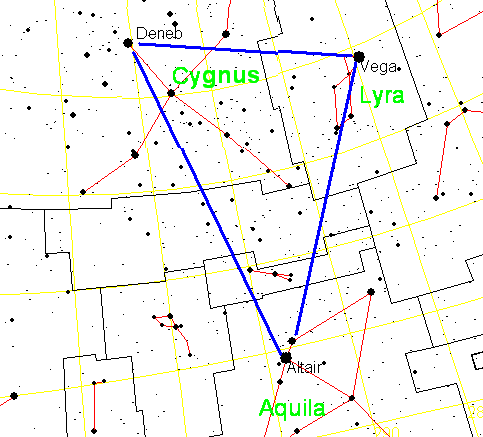An asterism is a popularly known pattern or group of stars that can be seen in the night sky. Although this is very similar to a constellation, asterisk do differ as they are IAU officially recognized area of the sky. Asterisms on the other hand is a group of visual collection of stars. visually connected that lack determined boundaries. Therefore, asterisms provide a more general. concept of identified patterns and an informal grouping of stars within an existing or prior constellation.
Although not officially designated in the sky, asterisms are extremely useful for new astronomers familiarizing themselves with the night sky. It is common for asterisms to range from simple shapes of just few stars to more complex collections of many bright stars.
History Of Asterisms
In many early civilizations, it was common to associate groups of stars together, with the earliest records of this occurring in Babylonia. When these early civilizations grouped together the stars into constellations, these groups reflected what each culture saw. There was some overlap, with constellations such as Orion and however, at this time these grouping were all the same.
As astronomy became more standardized, the scientific community began distinguishing between constellations and other systems. This began with a general list containing 48 constellations that was. developed by astronomer Hipparchus and became the European Standard for 1800 years. With the European age of expansion, the Southern sky began to be populated with constellations as well.
It was in 1928 that the International Astronomical Union precisely divided the sky into 88 official constellations that followed the geometric boundaries encompassing all of the stars within them. Therefore, this meant that any additional new selected groupings of stars or former constellations are generally considered as asterisms. It is worth noting that literature does vary in ambiguity in regards to the technical distinctions between the terms ‘constellation’ and ‘asterism.’
Common Asterisms
There are a plethora of asterisms that can be seen, with there being several different types. There are a common asterisms that include:
- The stars Arcturus, Regulus, and Spica form a triangle that has been given the name Spring Triangle.
- The stars Deneb, Altair, and Vega form a triangle called the Summer Triangle. These stars are easily recognized in the northern hemisphere summer skies, as its three stars are all of the 1st magnitude. The Summer Triangle stars reside in the Milky Way band which marks the galactic equator, and are in the direction of the galactic center.
- The stars, Capella, Aldebaran, Rigel, Sirius, Procyon, Pollux, Castor, and Betelgeuse, comprise the Winter Hexagon.
- The Winter Triangle visible in the northern sky’s winter and comprise the first magnitude stars Procyon, Betelgeuse and Sirius.
Constellation based asterisms
These are asterisms based upon an entire constellation. Some famous examples of these include:
- There is the Northern Cross in Cygnus, which runs from Deneb to Albireo to include ε Cygni and δ Cygni.
- The Southern Cross is an asterism by name.
- A very reliable asterism visible throughout the winter is Orion’s Belt/The Belt Of Orion
Commonly recognised asterisms
These are composed of stars from one constellation, but do not refer to the traditional figures. Examples of these include but are not limited to:
- The Diamond Cross, which is made up of four other stars to form a well-shaped diamond. These stars are Beta, Upsilon, Theta, and Omega Carinae.
- The Saucepan or Pot contains stars that are in the Orion’s Belt and Sword.
- The bow and arrow of the Archer also make a well-formed Teapot.
Cross-border asterisms
These are formed from stars in more than one constellation. There are a few of these, which include but are not limited to:
- There is the Egyptian X, which has its name derived from its shape and the asterism is more easily seen from south of the Mediterranean than in Europe.
- The Lozenge is a small diamond formed from three stars, which exists in the head of Draco and in the foot of Hercules.
- From latitudes above 40 degrees north can see a prominent upper-case Y that is formed by Arcturus, Seginus, and Izar, and Alpha Coronae Borealis.
Telescopic asterisms
- Coathanger in the constellation Vulpecula.
- Kemble’s Cascade in the constellation Camelopardalis is a chain of stars that ends in open cluster NGC 1502
- The triangular shaped Christmas Tree Cluster in the constellation Monoceros made up of about approximately 40 stars.
- The Nibelungen Ring in the constellation Draco, which is near galaxy NGC 6015

When I saw this page was like wow. Thanks for putting your effort in publishing this article.
Wow! Thank you! I constantly needed to write on my site something like that. Can I take a part of your post to my website?
Hey,
Feel free to use the content as long as attribution is provided.
Thanks for taking time for sharing this article, it was fantastic and very informative. as a first time visitor to your blog. Have you considered promoting your blog? add it to SEO Directory right now 🙂
You site is very beautiful! I keep coming to your site, as it is so wonderful